One of the first cork oaks I started working on has developed quickly. I let a couple of sacrifice branches grow freely and they have now adequately thickened the branch that will become the new leader. It’s time to make a big cut.
Field grown cork oak
The decision to cut has also been influenced by the health of the lower branches. Because the top of the tree is growing so strongly, the tree hasn’t invested in the lower branches which are turning yellow and may soon die back.
Here is the yellowish foliage I noticed on the lowest branch on the left.
Yellow foliage
And here is healthy green from the top of the tree.
Healthy foliage
I started by shortening the sacrifice branches on the old trunkline.
After cutting the first two sacrifice branches
I then reduced the new trunkline.
After reducing the new trunkline
Next, I carefully removed the stub with a saw.
The wound after cutting back to the new trunk line
Here’s what the tree looked like after reducing the trunk and shortening the branches.
Cutback complete
As now is a good time to repot the tree, I removed it from the box and reduced the size of the rootball.
After initial root work
Looking closely at the remaining rootball, it was clear that some of the roots were growing in good bonsai soil while others were still in field soil.
A patch of field soil
A patch of bonsai soil
I decided to remove the field soil by using a root hook and an aluminum pick to scrape the soil away from the roots. There weren’t a lot of fine roots in this area.
After removing the field soil
I repotted the tree in a training pot with a mix containing 30% akadama with a mix of lava, pumice and kanuma making up the remaining 70%.
Repotting complete
I’m curious to see how the main branches fare after making the big cuts, but I won’t be surprised if there’s some dieback.
For those curious about the work on this tree over the past couple years, see “Stimulating new buds on cork oak” and “Developing a young cork oak bonsai” for details.
Subscribe to Bonsai Tonight
New Posts Delivered Every Tuesday and Friday

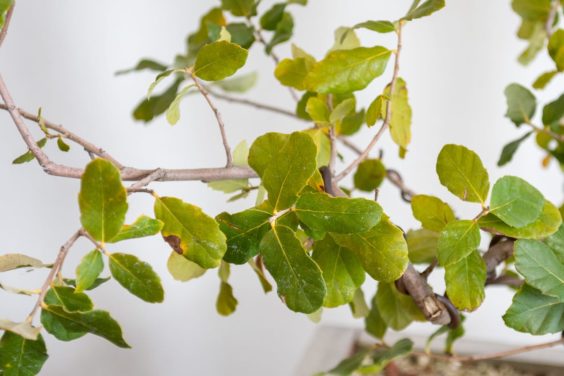
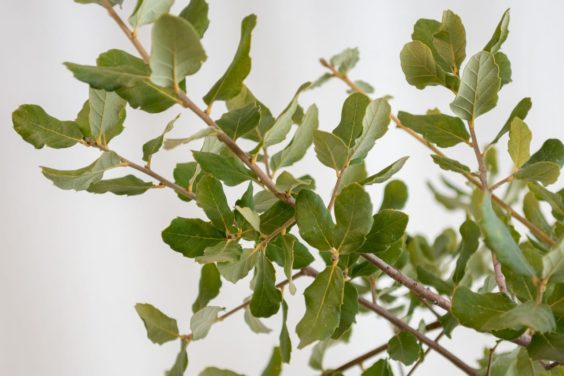
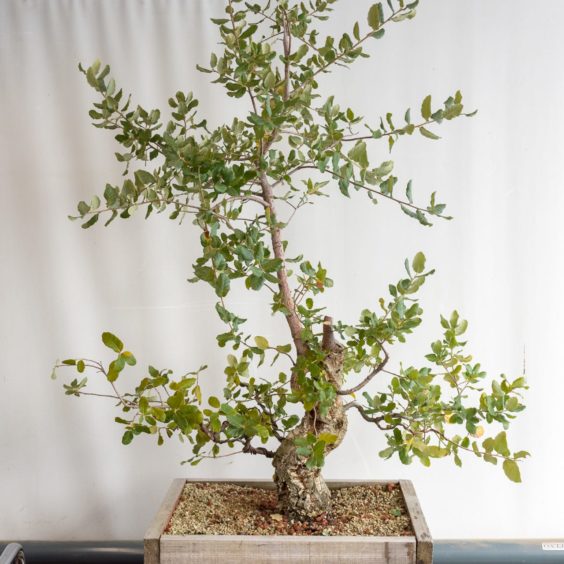
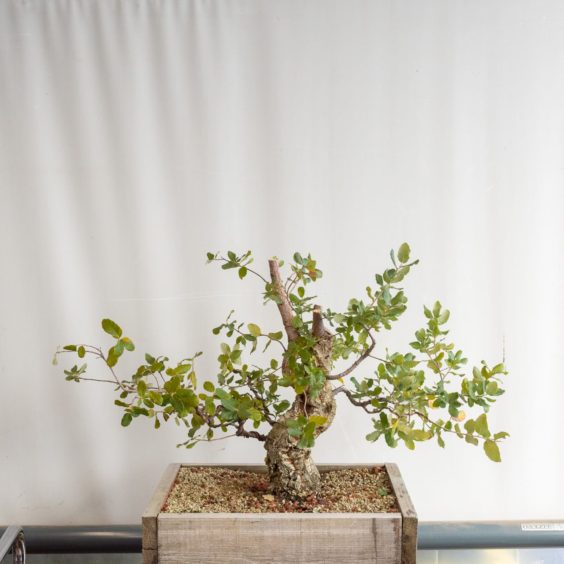
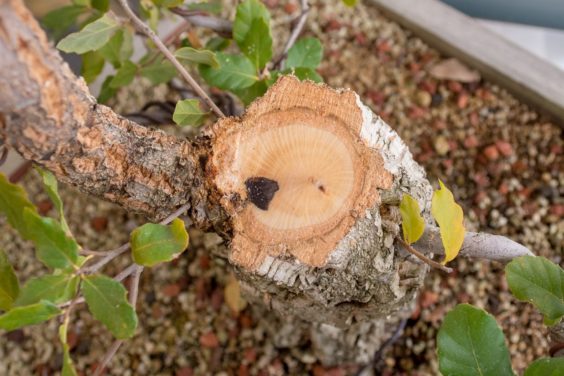
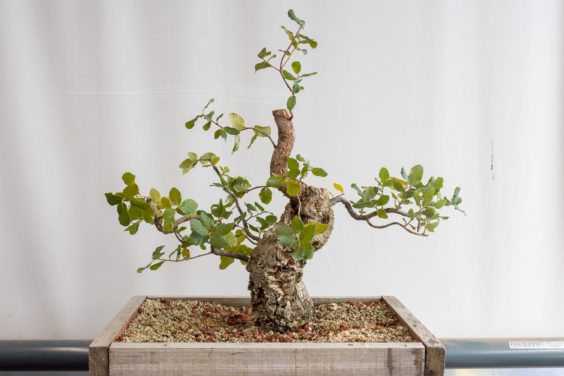
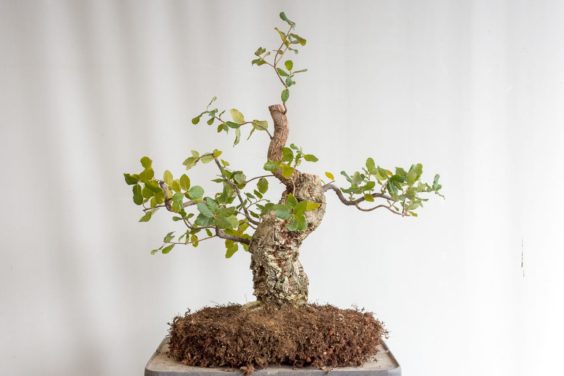
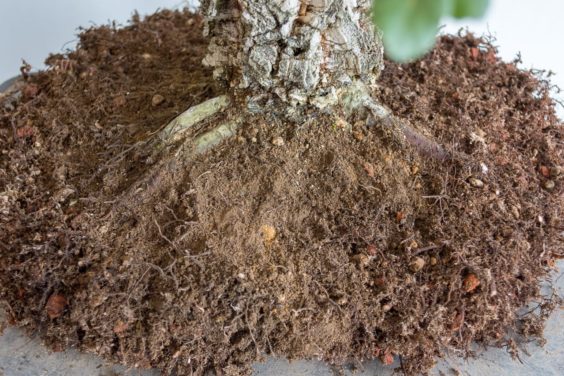
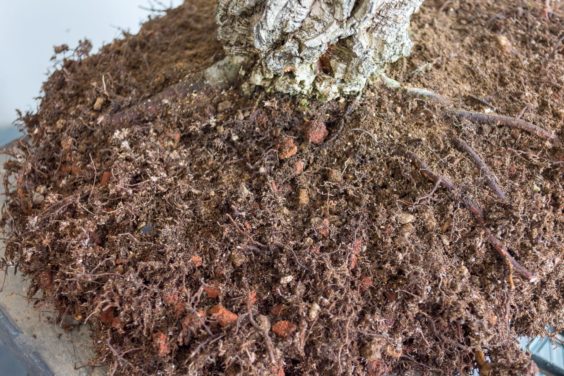
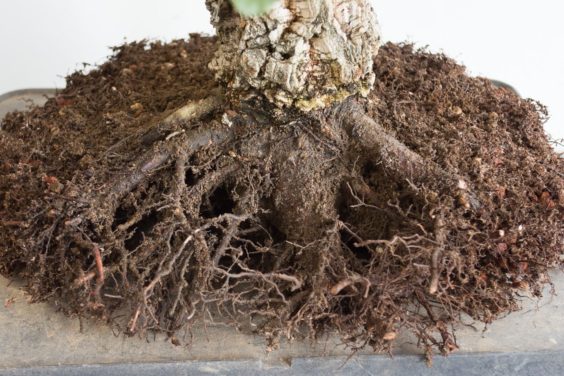
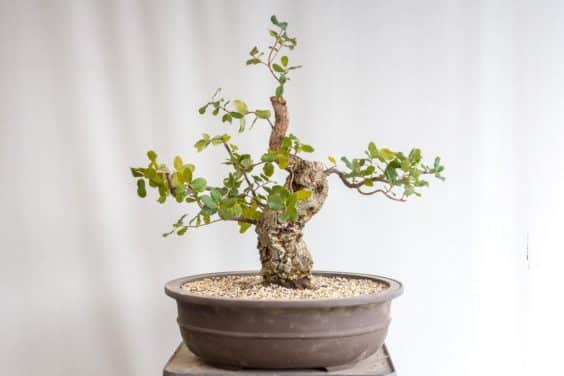
Tim says
The tree looks great, healthy and well rooted. Is it possible to clone the thicker cuttings from that type of tree? Hmm or graft
Jonas Dupuich says
It’s possible but I don’t know how easy. Oaks are more commonly propagated by acorn. Grafting too is a less common approach to propagation.
Charlie Mosse says
I have a Cork Oak very similar to yours. It was sort of a cutting with only about 3″ of roots. It is a little over 5″ tall at the cut with an apex branch bent into a vertical postion. George Muranaka gave it to me to play with, and if it lived, then I would pay him. Well since last January it has exploded with growth so now I owe George. It appears to have a lot of roots based on the fact it does not wiggle that much anymore. I am wanting to pop it out of the container to see how well it is rooted but should probably wait. I trimmed it 4 times last year removing about 5-6″ of growth each time. However, with all of that growth, no buds ever popped on the outside of the lower curve of the trunk. All of the branching starts about 1/2 way up the trunk. I have an idea to cut the existing branches hard to get more buds to pop on the trunk. I did this with another Cork Oak and it worked. What do you suggest?
Jonas Dupuich says
Good question Charlie – can you post this with a photo of the tree at https://ask.bonsaitonight.com/ ?
Charlie Mosse says
Yes. thx